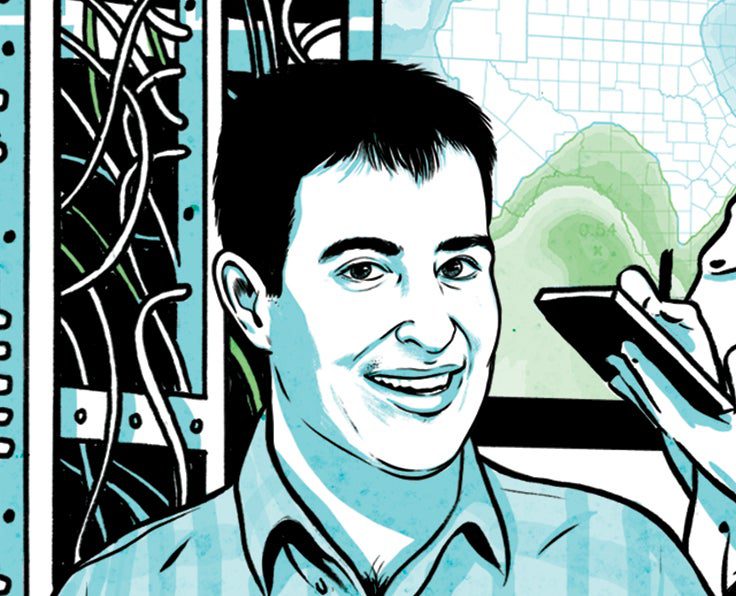Each year, Popular Science_ seeks out the brightest young scientists and engineers and names them the Brilliant Ten. Like the 110 honorees before them, the members of this year’s class are dramatically reshaping their fields–and the future. Some are tackling pragmatic questions, like how to secure the Internet, while others are attacking more abstract ones, like determining the weather on distant exoplanets. The common thread between them is brilliance, of course, but also impact. If the Brilliant Ten are the faces of things to come, the world will be a safer, smarter, and brighter place.–The Editors_
Nicolas Fontaine
Bell Labs, Alcatel-Lucent
Achievement
Saving the Internet from itself
Nearly all communications data—Web, phone, television—runs through a network of fiber-optic cables. For now, that’s fine. But within a decade, data traffic is expected to outgrow infrastructure, which will result in transmissions that are slow and garbled. Nicolas Fontaine, an optical engineer at Bell Labs Alcatel-Lucent, has devised a clever way to avoid a data bottleneck.
Fontaine and his colleagues invented a new kind of multiplexer, a device that bundles multiple inputs into one stream in order to cram a lot more data into a single optical fiber. It works by routing different light beams, called modes, along carefully planned pathways; the beams of information travel together but don’t interfere with one another. “The old fiber would be only a single-lane highway,” says Fontaine. “Now we can add multiple lanes.” Fontaine’s multiplexer avoids the signal loss that crippled earlier devices; he has already shown that his multiplexer can send six light streams down 497 miles of fiber without losing data along the way.
While previous multiplexers are a cubic foot or more; Fontaine’s is 50 cubic millimeters. Since it’s made of glass and etched by laser, it would be cheap to produce. The device is also scalable: “Right now, we’re working on a 10-mode device—an order of magnitude over existent single-mode fiber,” Fontaine says. “We want to figure out how far we can go.”
Click here to see more from our annual celebration of young researchers whose innovations will change the world. This article originally appeared in the October 2013 issue of Popular Science.









